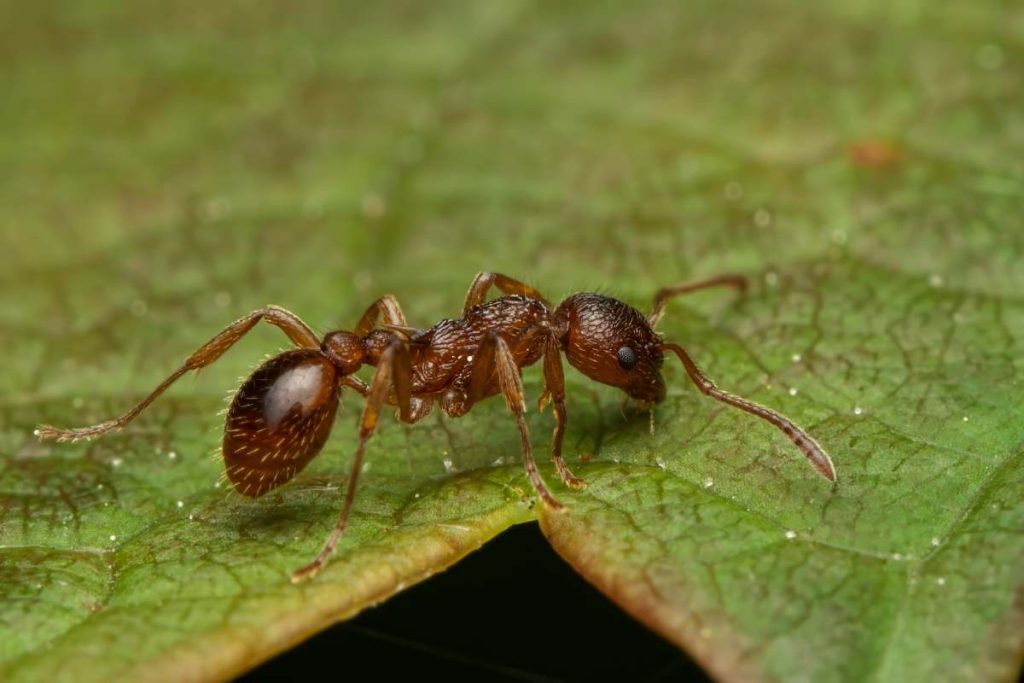Fire ants, small yet formidable pests, have become a significant concern in Australia. Originally from South America, these invasive insects pose severe threats to the environment, economy, and public health. Their aggressive nature, rapid reproduction, and adaptability make them incredibly difficult to control.
To address this growing problem, Australian authorities have implemented a comprehensive strategy aimed at eradicating fire ants from the country. This article explores why fire ants are a problem in Australia, the challenges in eradicating them, and the robust response from Australian authorities to tackle this invasive species.
You might also read:
Why fire ant is such a problem in Australia?
Fire ants are small, reddish-brown insects that pack a powerful sting. Originally from South America, these ants have become a significant problem in many parts of the world, including Australia. Their presence in Australia is not just an inconvenience; it poses serious environmental, economic, and health risks. Let’s explore why fire ants are such a big problem in Australia.
Environmental Impact
Fire ants are highly aggressive and can outcompete native ant species for food and territory. This disruption can lead to a decline in native insect populations, which in turn affects the animals that rely on those insects for food. Moreover, fire ants can damage crops and plants by feeding on seeds, fruits, and young plants. Their nesting behaviour can also disturb soil structure, leading to erosion and negatively impacting plant growth.
One particularly concerning aspect is their impact on ground-nesting animals, such as certain birds and reptiles. Fire ants can invade nests, attacking and killing young animals, which leads to a decline in these native species. This disruption to the ecosystem can have far-reaching consequences, affecting biodiversity and the health of the environment.

Economic Impact
The economic impact of fire ants in Australia is substantial. Their presence can decrease agricultural productivity by damaging crops and equipment. Farmers may have to spend more on pest control measures and deal with the loss of income from reduced crop yields. Additionally, fire ants can cause damage to infrastructure by nesting in electrical equipment, causing short circuits and power outages.
For households, fire ant infestations can lead to costly extermination services and repairs to property. These ants are known to nest in lawns, gardens, and even inside homes, making them a persistent and expensive nuisance.
Health Risks
Fire ants pose significant health risks to humans and animals. Their stings are painful and can cause allergic reactions in some people. In severe cases, multiple stings can lead to anaphylactic shock, a potentially life-threatening condition that requires immediate medical attention. Pets and livestock are also at risk; fire ants can swarm and sting animals, leading to injury or death, particularly in smaller or young animals.
Children are especially vulnerable as they might unknowingly disturb a fire ant nest while playing outdoors. The risk of stings can make outdoor activities less enjoyable and safe, impacting the quality of life for residents in infested areas.
Why is it so hard to get rid of fire ants?
Fire ants are notorious for being difficult to eradicate. These resilient pests have spread far and wide, posing significant challenges to control efforts. The difficulty in getting rid of fire ants stems from their biological characteristics, their ability to adapt and survive, and the complexity of completely eliminating them from an area.
Biological Characteristics
Fire ants possess several biological traits that make them tough adversaries:
- Aggressive Nature: Fire ants are highly aggressive and protective of their colonies. When threatened, they can quickly mobilize and attack in large numbers, making it risky to disturb their nests without proper protection and techniques.
- Multiple Queens: Many fire ant colonies have multiple queens. This means that even if one queen is eliminated, others can continue to reproduce, ensuring the colony’s survival and growth.
- Fast Reproduction: Fire ants reproduce rapidly. A single queen can lay thousands of eggs in her lifetime, leading to quick population growth. This rapid reproduction makes it challenging to keep their numbers in check.
- Deep Nests: Fire ant nests can extend deep underground. This depth makes it difficult for surface treatments to reach and kill the entire colony. The ants can also move their nests if disturbed, complicating eradication efforts.
Adaptability
Fire ants are highly adaptable, allowing them to thrive in various environments:
- Survival Skills: Fire ants can survive floods by forming floating rafts with their bodies. This ability to withstand natural disasters makes it hard to eliminate them through environmental changes.
- Diet Flexibility: Fire ants are omnivores, meaning they can eat a wide range of food sources, from plant material to insects and small animals. This dietary flexibility helps them thrive in different habitats and makes it difficult to target their food supply as a control method.
- Resistance to Treatments: Over time, fire ants can develop resistance to certain pesticides. This resistance means that treatments that were once effective may become less so, requiring the development of new strategies and chemicals.

Complexity of Eradication
Completely eradicating fire ants involves more than just killing visible ants:
- Hidden Colonies: Fire ant colonies are often hidden and difficult to locate. They can be spread out over large areas, with multiple interconnected nests. Finding and treating every nest is a significant challenge.
- Reinfestation: Even after a successful eradication effort, reinfestation can occur. Fire ants can re-enter treated areas from surrounding untreated zones, making ongoing monitoring and maintenance necessary.
- Human Activities: Human activities, such as moving soil, plants, or goods from infested areas, can inadvertently spread fire ants to new locations. This spread complicates efforts to control their population.
Integrated Pest Management (IPM)
Effective fire ant control often requires an integrated approach:
- Chemical Treatments: Using baits and insecticides specifically designed for fire ants can be effective. However, these treatments need to be applied correctly and consistently over time.
- Biological Control: Researchers are exploring natural predators and pathogens that target fire ants. Introducing these biological controls can help reduce fire ant populations without relying solely on chemicals.
- Environmental Management: Altering the environment to make it less hospitable to fire ants can help. This might include managing moisture levels, removing food sources, and maintaining healthy vegetation.
- Public Education and Participation: Educating the public about fire ants and encouraging them to report sightings and participate in control efforts is crucial. Community involvement can enhance the effectiveness of control programs.
What is the Australian authority’s response to fire ants infestation?
In response, Australian authorities have implemented a comprehensive strategy to control and eventually eradicate fire ant infestations. This strategy involves a combination of surveillance, treatment, public engagement, and research.
National Red Imported Fire Ant Eradication Program
The cornerstone of Australia’s response to fire ants is the National Red Imported Fire Ant Eradication Program (NRIFAEP). Established in 2001, this program aims to eliminate fire ants from Australia through coordinated efforts involving federal, state, and local governments.
Key Components of the Response

- Surveillance and Detection
- Systematic Surveys: Regular and systematic surveys are conducted to detect fire ant infestations. These surveys involve ground inspections, aerial photography, and the use of specially trained detection dogs.
- Public Reporting: The program encourages the public to report sightings of fire ants. A dedicated hotline and online reporting tools make it easy for residents to notify authorities of potential infestations.
- Treatment and Eradication
- Baiting and Insecticides: Authorities use a combination of baiting and insecticides to target fire ant colonies. Baits containing insect growth regulators are spread over infested areas, which the ants collect and bring back to their nests. This method disrupts their reproductive cycle, leading to colony collapse.
- Direct Nest Injection: For large or particularly resilient colonies, direct nest injection with insecticides is used to ensure thorough eradication.
- Containment Measures
- Movement Controls: To prevent the spread of fire ants, strict regulations are in place to control the movement of materials that could harbour ants, such as soil, mulch, and plants. Permits and inspections are required for transporting these materials from infested areas.
- Fire Ant Biosecurity Zones: These zones are established around known infestation sites. Within these zones, heightened surveillance and stricter movement controls are enforced to contain and eliminate the ants.
- Public Engagement and Education
- Awareness Campaigns: Public awareness campaigns are conducted to educate residents about the risks of fire ants and the importance of early detection and reporting. These campaigns use various media, including television, radio, print, and online platforms.
- Community Involvement: Community engagement initiatives encourage residents to participate in surveillance and treatment efforts. Workshops, training sessions, and volunteer programs are organized to involve the public in eradication activities.
- Research and Innovation
- Ongoing Research: Continuous research is conducted to improve fire ant detection and treatment methods. This includes studying ant behaviour, developing more effective baits and insecticides, and exploring biological control options.
- Technological Advances: Innovations such as drone technology and geographic information systems (GIS) are used to enhance surveillance and mapping of fire ant infestations.
Successes and Challenges
The NRIFAEP has achieved significant successes in reducing fire ant populations and preventing their spread. However, the eradication of fire ants remains a challenging and ongoing effort. Some of the key challenges include:
In response, Australian authorities have implemented a comprehensive strategy to control and eventually eradicate fire ant infestations. This strategy involves a combination of surveillance, treatment, public engagement, and research.
Conclusion
The fight against fire ants in Australia is an ongoing battle that requires continuous effort, innovation, and public cooperation. Despite the challenges posed by their aggressive behaviour, rapid reproduction, and adaptability, significant progress has been made through the National Red Imported Fire Ant Eradication Program. By combining systematic surveillance, effective treatment methods, strict containment measures, and public engagement, Australian authorities are working tirelessly to eradicate these pests.
Continued research and technological advancements will be crucial in overcoming the remaining hurdles. With sustained commitment and community involvement, Australia can move closer to a future free from the threat of fire ants.



